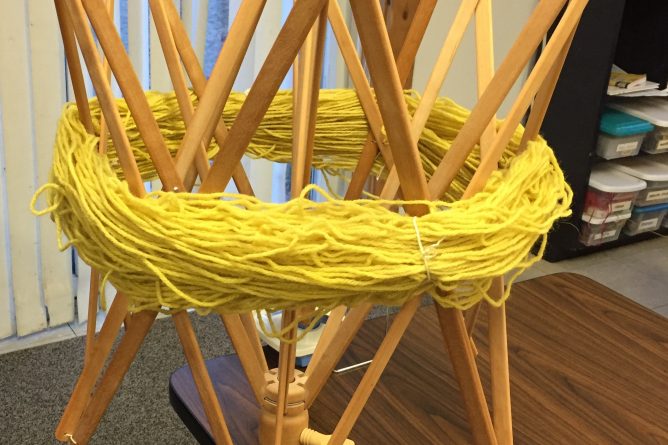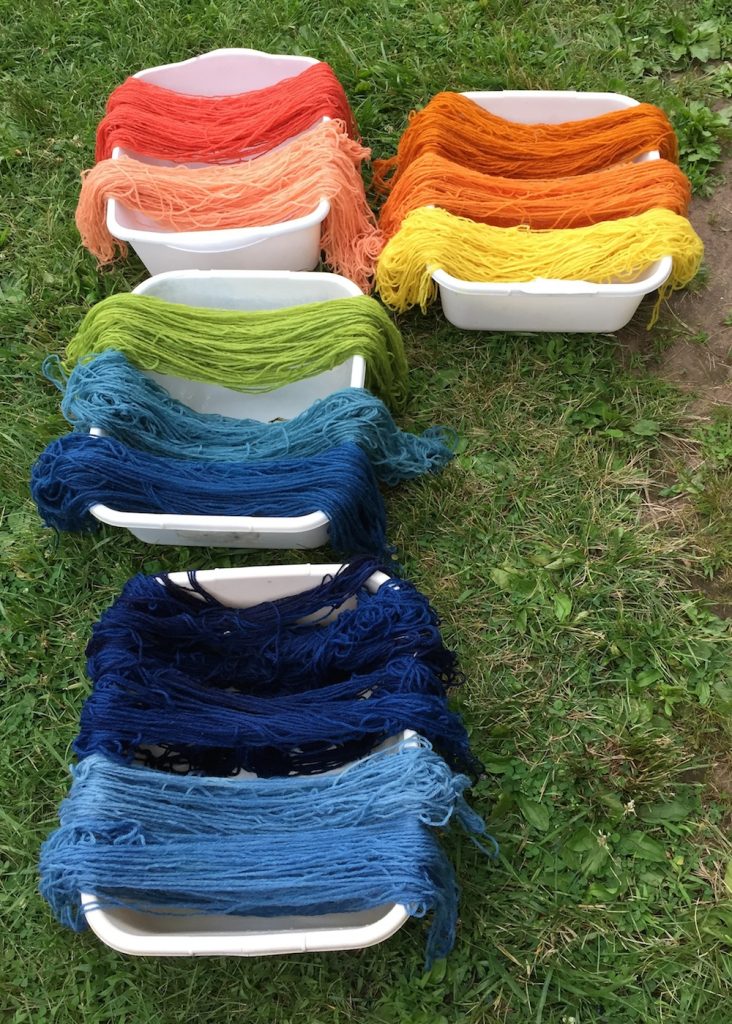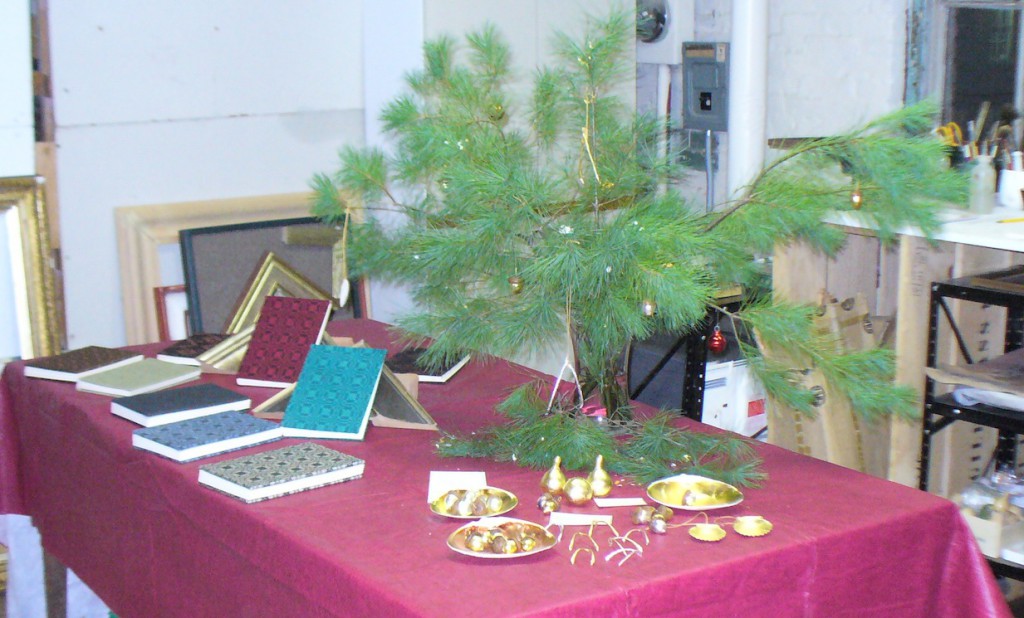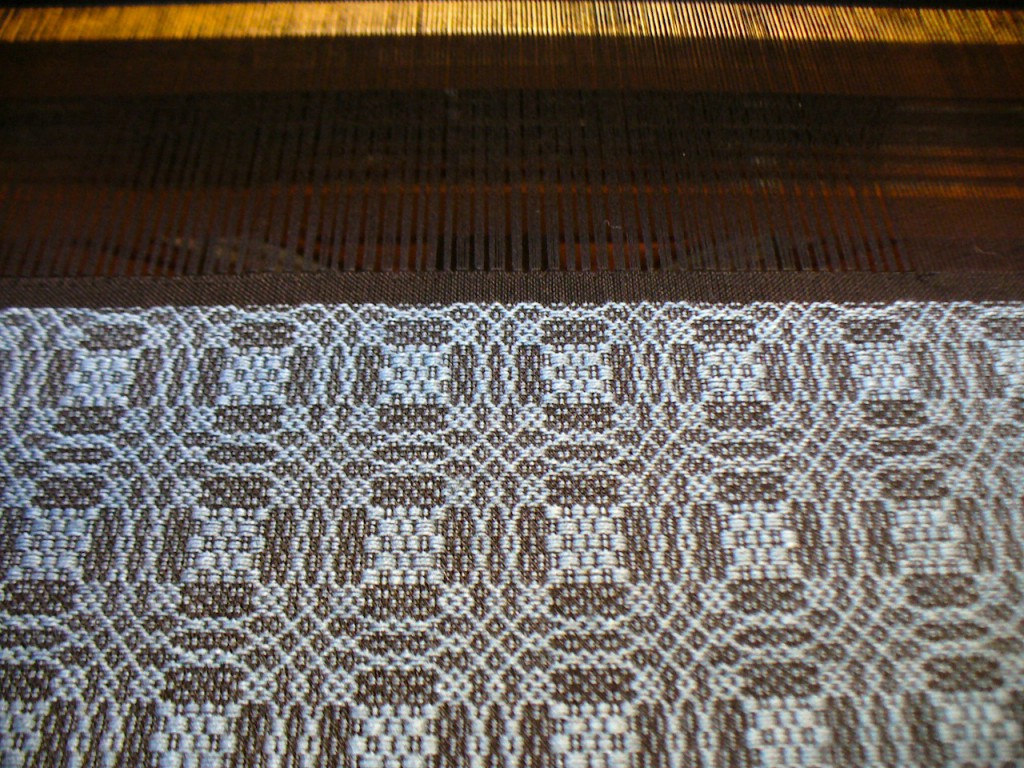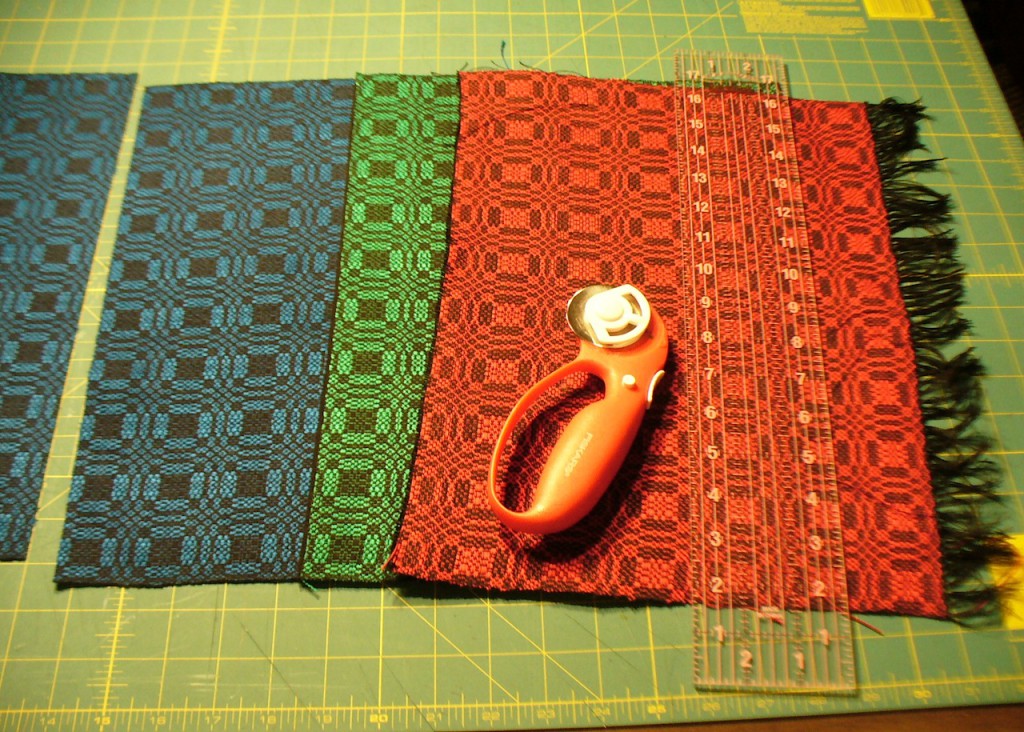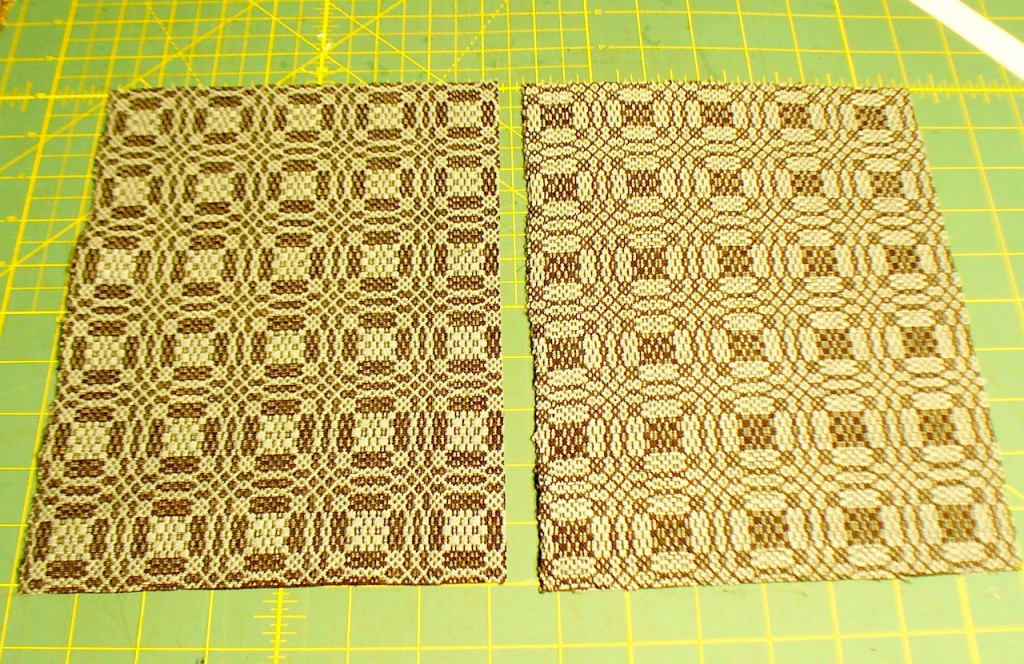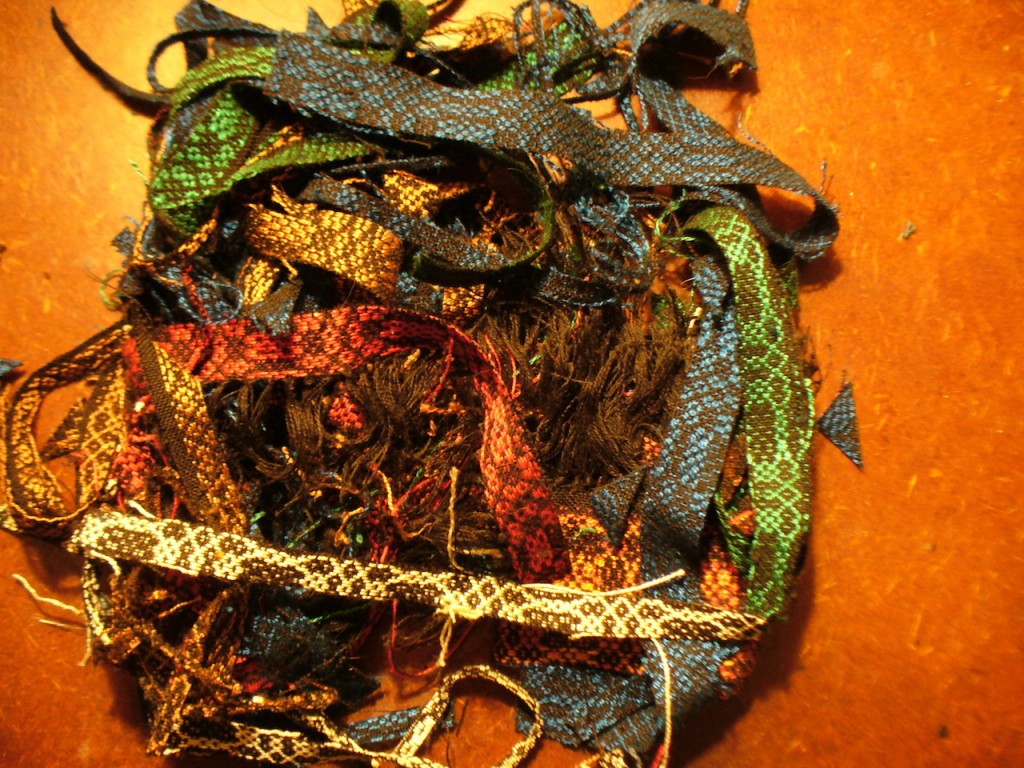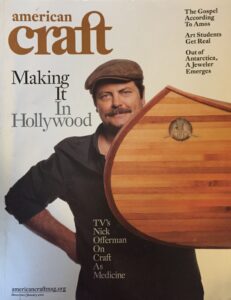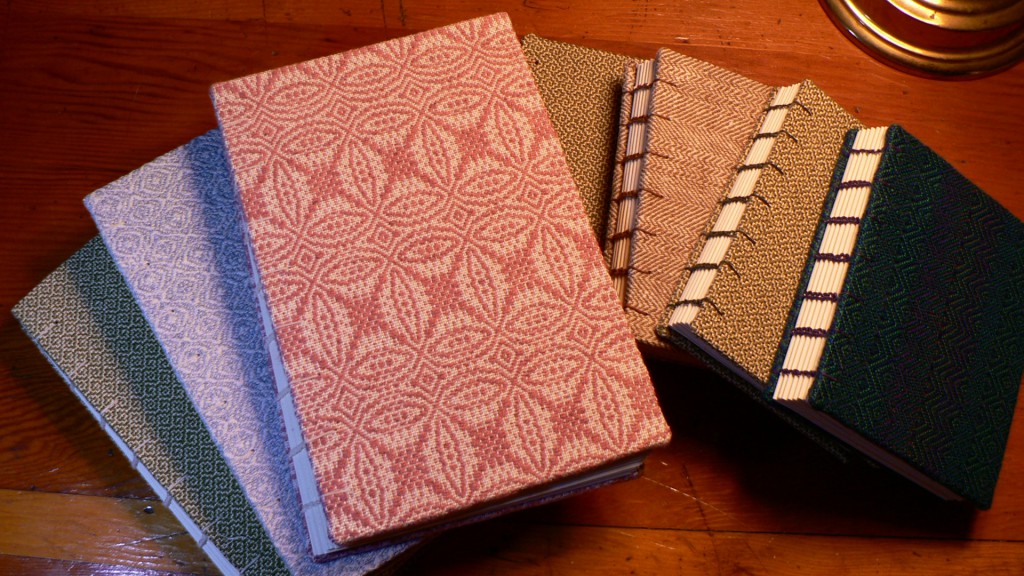I will be teaching four craft, weaving, and fiber arts camps for kids this summer at the Common School. Registration is open now for Summerfun 2019. You can see the descriptions on the Common School website. (12/31/2023 Edited: You can check out their summer programs, but my listings are long gone!)
Sew Plush
Ages 8-11
June 24 – June 28
Weaving Whirlwind
Ages 9-13
July 1 – July 5 (no camp on July 4)
Fiber Arts
Ages 9-13
July 15 – July 19
The Art of Nature
Ages 8-11
July 22 – July 26
Here’s a photo of the yarns we dyed with my fiber arts camp last summer, using madder roots, weld, tansy, marigolds, and indigo. We did not grow the indigo, but everything else came from the Common School’s dye and fiber plant garden:
For teachers of young children, I will be doing a workshop on growing and using dye plants on June 8th, 2019 at Antioch University’s In Bloom conference here in Amherst, MA. I’m excited to be able to offer this workshop on location at the Common School, where we can walk over to the farm to see the dyeplant garden while the dyepots are steeping at school. More information is available on the Antioch University website.
Here are some images of yarns we dyed with my class at the Common School this winter, using dried marigolds, frozen orange cosmos flowers, and dried bronze fennel. We made them as part of our “Senses” study. Students helped to collect the flowers earlier in the fall, and sprouted some bronze fennel seedlings of their own to take home. This project engaged our sense of smell as well as our sense of sight.
If you are neither a child nor a teacher of children, never fear. There will be more Local Color Dyes events to come in 2019. I will keep you posted!

